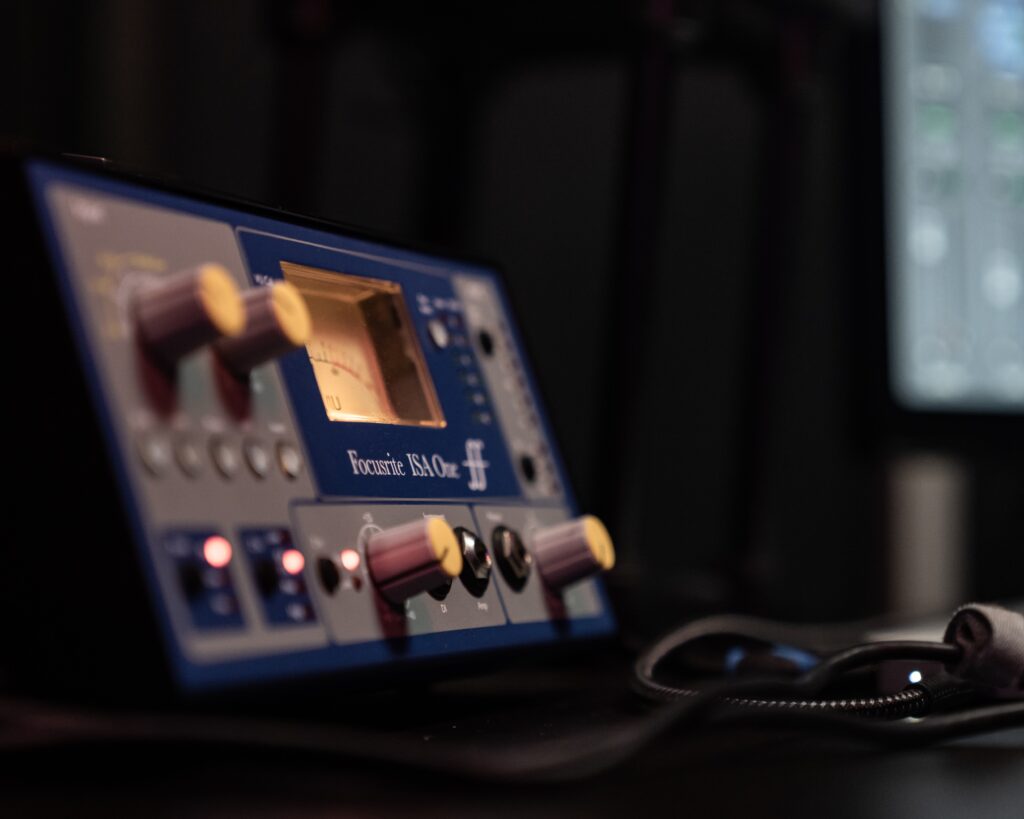There’s a unique allure to the vibrant strum of an acoustic guitar, amplified to reach every corner of a room, that can’t be ignored. This is what makes an acoustic-electric guitar an appealing choice for many music enthusiasts.
The perfect fusion of rich acoustic tones with the versatility of amplified sound, these instruments are a go-to for both beginners and professionals alike. One might think that finding a good quality guitar means splashing out thousands, but that’s not the case.

Today, we will explore some of the best Acoustic Electric Guitar Under $500, proving that you don’t have to break the bank to strike the perfect chord.
Top 5 Acoustic-Electric Guitars Under $500
Before we dive into our list of the best acoustic-electric guitars under $500, it’s essential to note that the guitars mentioned have been personally tested and reviewed.
These reviews are based on personal experiences, offering an honest and comprehensive overview.
Yamaha FGX800C
Yamaha is a well-respected brand in the music world, known for producing high-quality instruments at affordable prices. The Yamaha FGX800C is no exception.
With its solid Sitka spruce top and nato/okume back and sides, this guitar provides a well-balanced sound, perfect for a variety of genres.
Features
- Solid Sitka Spruce Top: Known for its broad dynamic range and crisp articulation, Sitka Spruce makes the ideal top wood for this versatile guitar.
- Nato/Okume Back and Sides: These tonewoods provide a rich, resonant sound with a beautiful grain finish.
- System 66 feature: This feature includes an under-saddle piezo pickup with a 3-band EQ, an adjustable mid-range frequency control, and a precision chromatic tuner for optimum sound tailoring.
Pros
- Exceptional sound quality
- Versatile for different music styles
- Robust build quality
- Precise onboard tuner
Cons
- The action may be a bit high for some players
- It might require a setup for optimal playability
This overview provides an idea of the Yamaha FGX800C’s capabilities, proving it to be a top contender in the best acoustic-electric guitars under $500. However, let’s explore more options to ensure you find the perfect fit.
Fender CD-60SCE
The Fender CD-60SCE is a popular choice among beginners and intermediate players due to its playability and the robust sound it offers.
This guitar features a solid spruce top with scalloped “X”-bracing that provides a vibrant tonal quality.
Features
- Solid Spruce Top: The top wood plays a crucial role in the sound of the guitar, and the spruce top of the CD-60SCE offers a versatile tone that suits various playing styles.
- Easy-to-Play Neck: With its comfortably rolled fingerboard edges, this instrument’s neck creates an incredibly comfortable playing feel.
- Fishman® Pickup/Preamp System: This feature adds versatile amplification options with onboard volume and tone controls.
Pros
- Excellent value for money
- Comfortable playability
- Versatile sound
Cons
- Some may find the neck a bit thick
- Not the loudest unplugged sound
While the Fender CD-60SCE is a reliable choice, especially for beginners, there are other options that might cater to different needs.
Ibanez AE245JR
The Ibanez AE245JR stands out as an exceptional choice for those seeking a smaller-bodied acoustic-electric guitar that doesn’t compromise on sound quality. Its design caters particularly well to players who may find larger guitars cumbersome, ensuring a comfortable playing experience without sacrificing tonal richness.
This guitar features an Okoume top, back, and sides, which work together to produce a balanced tone with a strong mid-range presence and a clear, bright top-end. The addition of the Ibanez AEQ-SP2 preamp with an onboard tuner further enhances its appeal, offering easy tone shaping and convenient tuning on the go.
Whether you’re a beginner or a seasoned player looking for a compact guitar with a full-bodied tone, the Ibanez AE245JR offers a harmonious blend of comfort, quality, and versatility.
Features
- Okoume Top, Back, and Sides: This tonewood delivers a balanced tone, with strong mids and a clear, bright top-end.
- Ibanez AEQ-SP2 preamp w/Onboard tuner: This system provides easy tone shaping and tuning on the go.
- Comfortable Body Size: The smaller body size allows for easier playability, especially for those with a smaller frame.
Pros
- Smaller body size for comfort
- Versatile tone
- Onboard tuner for convenience
Cons
- Might lack the deep bass of larger-bodied guitars
- Not as loud as full-sized guitars
Epiphone EJ-200SCE
The Epiphone EJ-200SCE, with its iconic jumbo body shape, brings a bold sound that has been loved by many artists over the years.
The guitar features a solid spruce top and maple back and sides, adding brightness to its tone.
Features
- Solid Spruce Top with Maple Back and Sides: This combination of tonewoods produces a bright, snappy tone, perfect for strumming and fingerpicking.
- SlimTaper™ D-profile neck: This feature enhances playability, ensuring a comfortable playing experience.
- eSonic2™ preamp system: This system offers a built-in tuner and blend control, allowing you to blend the signals from the NanoMag™ and the NanoFlex™ pickups.
Pros
- Bold, commanding sound
- Classic aesthetic appeal
- High-quality preamp system
Cons
- The large body might be uncomfortable for some players
- The bright tone might not suit those looking for a warmer sound
PRS SE P20E
The PRS SE P20E is a testament to quality craftsmanship and exquisite sound in a smaller-sized guitar. Ideal for players who prefer a more compact instrument, this guitar doesn’t skimp on tonal quality.
It features a solid mahogany top, renowned for delivering a warm and balanced tone that’s equally suited to strumming and fingerpicking. The PRS SE P20E is equipped with the Fishman GT1 pickup system, ensuring that the guitar’s natural acoustic sound is beautifully captured and amplified without compromise.
Its comfortable parlor body size makes it a delight to play, especially for extended periods, and its rich, resonant sound defies its smaller stature. This guitar is a superb choice for those who value a warm, nuanced sound and a guitar that’s easy to handle, yet capable of delivering a powerful musical expression.
Features
- Solid Mahogany Top: This tonewood provides a warm, rich tone that’s versatile and pleasing to the ear.
- Fishman GT1 pickup system: This system offers under-saddle electronics that deliver a natural, direct sound.Comfortable Parlor Body Size: The smaller body size makes it comfortable to play, even for extended periods.
Pros
- Comfortable size
- Warm balanced tone
- high-quality pickup system
Cons
- The smaller size may limit the volume and may lack brightness for some styles
The PRS SE P20E is an excellent example of a small guitar with a big voice. Remember, the key is to find a guitar that best suits your playing style, preference, and comfort.
The Art of Choosing an Acoustic-Electric Guitar
Choosing a guitar isn’t just a matter of price, brand, or looks. It’s about finding an instrument that speaks to your musical needs, preferences, and aspirations. You might be seeking a certain tone, comfort in playing, or specific features for performance.
No matter what you’re looking for, understanding what goes into a guitar can help you make the right choice.

Craftsmanship is at the heart of a quality guitar. It starts with selecting the right tonewoods, which significantly influence the sound produced. Spruce, mahogany, cedar, and rosewood are just some examples of common tonewoods used.
Each wood has its unique tonal characteristics, which contribute to the overall sound of the guitar1. Therefore, getting to know the woods can give you an insight into what to expect from your instrument.
Features of an Acoustic-Electric Guitar
Understanding the different parts of an acoustic-electric guitar, and their role in the overall performance of the instrument, is crucial. Let’s delve into a few features that you should consider:
As mentioned before, the type of wood used to construct the guitar (tonewood) plays a key role in determining the sound quality. Different tonewoods have different sound profiles and can greatly influence the tone, resonance, and sustain of your guitar
For instance, mahogany is known for its warm, rich sounds and is often used for the back and sides of acoustic guitars. On the other hand, spruce is prized for its bright, crisp tone and is frequently used for the guitar top.
Importance of Pickup and Preamp Systems
The pickup and preamp systems in an acoustic-electric guitar are what make it capable of producing amplified sound without losing the depth and resonance of acoustic performance.

The pickup captures the vibrations from the guitar, and the preamp amplifies this signal, allowing it to be sent to an amplifier or PA system. A quality preamp will also provide you with EQ controls to shape your sound and often includes a built-in tuner, which can be very convenient.
The Benefits of an Acoustic-Electric Guitar
The beauty of an acoustic-electric guitar lies in its versatility. It is, essentially, two instruments in one, offering you the natural, rich tones of an acoustic guitar and the flexibility to amplify your sound for larger venues or different music styles.
Acoustic-electric guitars provide the best of both worlds: the deep, rich sounds of an acoustic guitar and the ability to amplify those sounds for live performance or recording. Whether you’re playing a soft ballad or a lively pop tune, these guitars can deliver the necessary volume without losing the essence of the acoustic sound.
They allow the player to transition smoothly from a small, intimate venue to a larger stage setting.

Whether you’re into blues, rock, country, or pop, the acoustic-electric guitar is suitable for a wide variety of music genres. With the ability to adjust the tone and volume, you can modify the sound to fit your musical style perfectly. The sheer versatility of this instrument makes it a popular choice among musicians.
Acoustic-electric guitars are incredibly convenient when it comes to live performances or recording sessions. There’s no need to set up a separate microphone to capture the sound of your guitar – simply plug in and play. This not only saves time, but it also allows for a cleaner sound as there’s less risk of feedback or unwanted noise.
Tips for Maintaining Your Acoustic-Electric Guitar
Investing in an acoustic-electric guitar is a significant step for any musician. To ensure your instrument maintains its quality and performance, regular maintenance is crucial. Here are some maintenance tips that can help you keep your guitar in top shape.
Keeping your guitar clean extends its life and maintains its appearance. Use a gentle cloth to wipe down the strings and body after every use to remove sweat, oils, and dust. For more thorough cleaning, consider using guitar cleaning products that won’t damage the wood or finish.

Store your guitar in a temperature-controlled environment away from direct sunlight. Extreme temperatures and humidity can warp the wood, affect the sound, and potentially damage your instrument. A good quality guitar case can provide protection and help regulate humidity levels.
Regularly changing your guitar strings ensures optimal sound quality. How often you should change strings depends on your playing frequency, but a good rule of thumb is to change them every 3-4 months or sooner if you notice any discoloration or tonal changes (source).
Keeping your guitar tuned is crucial not just for sound quality but also for maintaining string tension, which helps keep the neck and body in good shape. You can use an electronic tuner for accurate tuning.
Frequently Asked Questions
In this section, we will be delving into some of the most common inquiries and curiosities that surround our topic.
Is an acoustic-electric guitar better than a regular acoustic guitar?
An acoustic-electric guitar offers the versatility of playing acoustically or plugging into an amplifier for louder volume, making it a popular choice for performers.
What is the benefit of a solid top on a guitar?
A solid top typically resonates better than a laminate top, producing a richer and more nuanced sound. Over time, as the wood matures, the tone can improve further.
How can I keep my guitar in the best condition?
Regular cleaning, proper storage, string changes, and keeping your guitar tuned can help maintain its quality and prolong its lifespan.
Is a $500 budget enough for a decent acoustic-electric guitar?
Absolutely! Many high-quality acoustic-electric guitars are available within this budget. This article provides several options that deliver excellent value for money.
Can I learn on an acoustic-electric guitar?
Definitely! An acoustic-electric guitar can be a great option for beginners because it allows for acoustic practice and also gives the flexibility to amplify the sound as you progress.
Conclusion: Best Acoustic Electric Guitar Under $500
Choosing the best acoustic-electric guitar under $500 depends on your specific needs and preferences. The guitars listed in this article are excellent choices, offering high-quality sound and durability at an affordable price.
Remember, the best guitar for you is one that matches your playing style, feels comfortable in your hands, and produces a sound that you love.